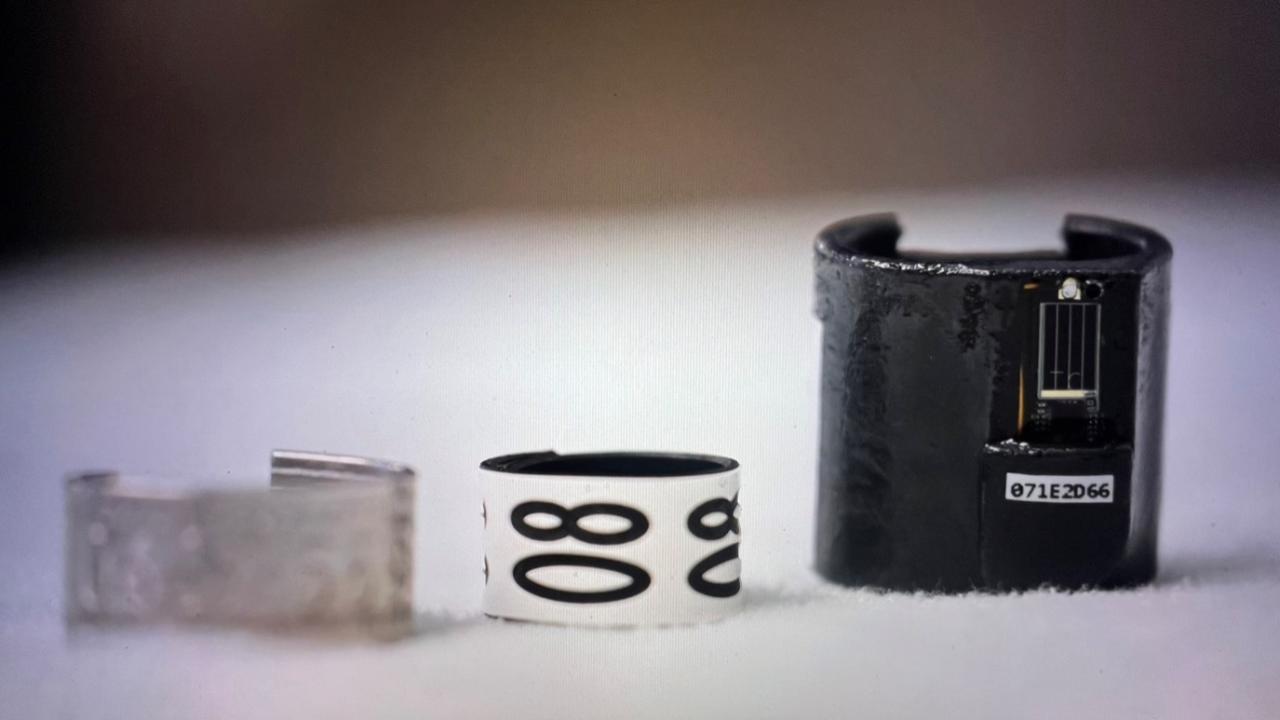
A New Way to Track Pelicans!
OWCN’s mandate, as many of you know, is “best achievable proactive capture and care to oil-affected wildlife”. This means that as a Network we are always striving to do a better job. As such, there have been great advances in the way that we care for animals – from capturing them in a safe and effective way and getting them into care as quickly as possible, to providing supportive care while they are at a facility to remove the contaminant and gain their strength back prior to release. One of the greatest challenges, however, is knowing what happens to these animals after they are released back into the wild.

In the not-so-distant past, the ability to track animals was generally clunky – devices were large, heavy, and often posed tremendous challenges in figuring out best attachment methods so they would stay on the animal yet cause the least amount of harm – sometimes a serious balancing act!
Enter the relatively “new” kid in town - meet the Motus Wildlife Tracking System! The Motus system is a worldwide collaborative effort that is managed by Birds Canada, has been popular on the east coast of the U.S. for several years and is slowly becoming more popular on the west coast. Unique radio signals that are embedded within small devices on a tagged animal are detected by a sensor station (within about 3-15 km of the animal) and the data are then uploaded to the cloud and sent back down to researchers. The more sensor stations out there, the greater the chance of “detections”.
In 2023 Deborah Jaques (Pacific Eco Logic) was awarded an OWCN research grant to develop and test a minimally invasive tracking method for pelicans after they are released. This is the first pelican study using this type of system and the first test of a pelican “e-Band”. This innovative band was designed by Cellular Tracking Technology (CTT) and Deborah Jaques. The overall project has several collaborators, including Tammy Russell (Scripps Inst. of Oceanography), Amelia DuVall (Univ. of Washington), and yours truly.
The Motus e-Band is a modified leg band embedded with a unique UHF digital identification, which is solar powered, and has an internal antenna with a three-day battery backup. For pelicans that are being released from rehabilitation, along with the Motus e-Band and a more common USGS aluminum band, a numbered and field readable color band is also placed on the leg – this can be either a blue band with a white number (indicating it was rehabilitated at International Bird Rescue), or a white band with a black number (rehabilitated at Pacific Wildlife Care or Wetlands and Wildlife Care Center). The overall longevity of the e-Band is unknown, as it is relatively new, but so far we know that it can last at least 8 months.

Since the first pelican was Motus e-Banded in May 2023, a total of 17 Brown Pelicans have been outfitted with this unique band. These pelicans have been banded at 3 rehabilitation centers, including International Bird Rescue (north and south), Pacific Wildlife Care in Morro Bay, and Wetlands and Wildlife Care Center in Huntington Beach. To date, 14 of the 17 birds have been detected at 11 automated sensor stations up and down the west coast of North America. This translates to over 90 individual detections and 82% of the banded birds being detected! We consider this a great success!
A Brown Pelican starvation event along the California coast, which began in mid-April 2024, provided a great opportunity to have a wider selection of pelicans for further testing the e-Band. In addition, tracking birds from the starvation event allows us to continue to gain understanding about the event, such as breeding population origin of the tagged birds if transmission persists until the southern migration in late fall-winter. The more immediate data will help us gain a better understanding of where the pelicans go after release.
Detections have ranged from Tomales Bay to Point Loma, CA, and there has been one detection on Santa Cruz Island. Three birds with over 20 detections have been living in the Santa Barbara Channel region winter-spring and survived the starvation event, as evidenced by detections during these periods by the Rincon Island, Coal Oil Point, and Pt. Conception stations.
As this system relies entirely on a network of sensor stations, it is of mutual benefit for researchers that are using this system to “band” together and set up stations in gap areas and strategic locations. For example, USGS has set up sensor stations to study potential impacts of wind energy on seabirds for BOEM (Bureau of Ocean Energy Management), so we are benefiting from their sensor station build out.
Overall, this project has been highly successful and shows a lot of potential! We are excited about continuing to track these pelicans to learn more about where they travel, where they breed, and how long these e-Bands might last. And hopefully, in the future, we may even test out a similar system on other species. Even though this cool e-Band is detected by a sensor, it is only detected if the pelican passes by within a detectable range. So, if you are along the beach this summer and happen to see a banded pelican, pay special attention if you spot either a blue color band or a white color band and please let us know:
For blue-banded pelicans click HERE.
For white-banded pelicans click HERE.
If you want to track them online, you can go to the Motus website and search by species for brown pelican.
